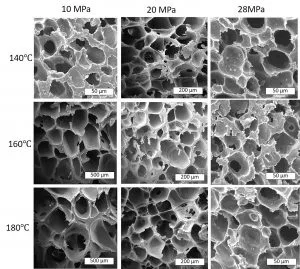We are seeing a lot exciting advances being made in the world of eco-friendly plastics, where forms of the material are being produced that safely break down in the environment in a few years or even months. While these are a decidedly green alternative to petroleum-based plastics that can linger for centuries, scientists in New Zealand have come up with an innovative way to give them a second life, boosting their environmental credentials even further.
The work was carried out at New Zealand's University of Canterbury, where scientists used biodegradable cutlery as their starting point, which were considered to be non-recyclable. Made from PLA bioplastics, these knives, forks and spoons can be safely composted after use, but the researchers have come up with a way to squeeze a little more out of the material before it is tossed away forever.
The team's breakthrough lies in an innovative treatment process, whereby this cutlery is placed into a chamber filled with carbon dioxide. Pressure is then cranked up inside the chamber, which causes the carbon dioxide to dissolve into the plastic. Then when the pressure is suddenly released, the gas expands inside the plastic and turns it into foam.
According to the team, this is much like the process of opening a can of soda and releasing the carbonation. Interestingly, the scientists found that they could alter the end product by making tweaks to the process. Lower pressure in the chamber led to bulkier foams with lots of air pockets, for example.

“Tweaking temperature and pressure, there is a window where we can make good foams,” said study author Heon Park. “It’s not that every temperature or every pressure works. We found what temperature or what pressure is the best to make those non-foamable plastics into foams.”
Flotation devices like buoys are one possible application for these bulky foams, while other versions could make their way into wall insulation, according to the scientists. Foams are a good endgame for these recycled bioplastics because for the most part they don't need to offer great strength to serve their purpose, a characteristic that is typically compromised through the plastic recycling process. And promisingly, the scientists believe the technology could be applied to a wider range of materials.
“We can expand foaming applications to a lot of plastics, not just this plastic,” said Park.
The research was published in the journal Physics of Fluids.
Source: American Institute of Physics




